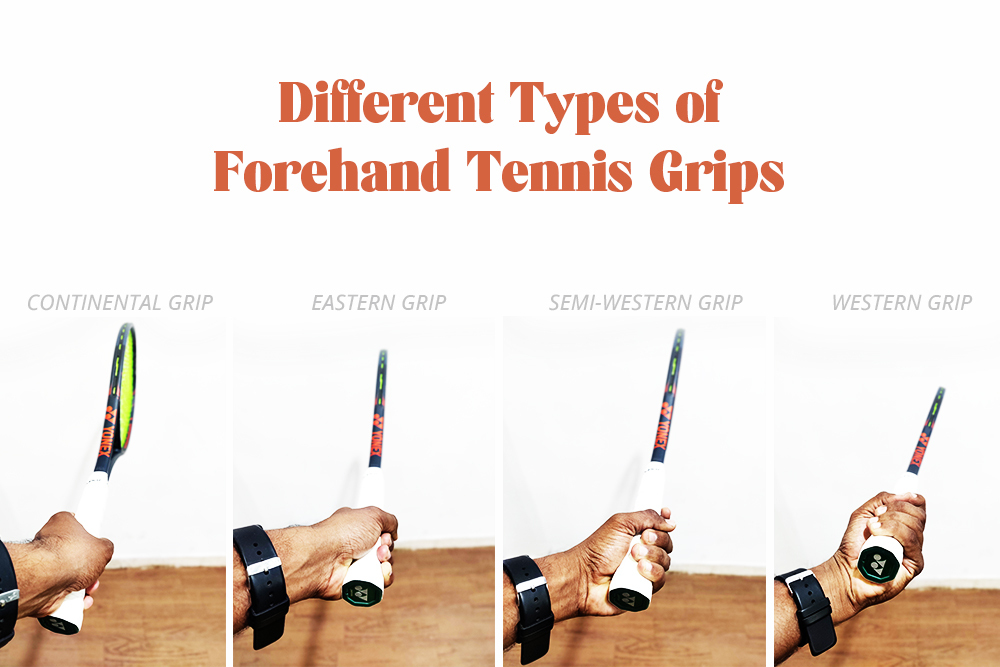Different Types of Forehand Tennis Grips
The various kinds of grips the players use on the court today are a result of evolution that happened over the past century. A significant change took place in the late 20th century when the traditional grass courts were being replaced by synthetic ones. All major tournaments like the Australian Open, US Open, Wimbledon were earlier played on grass courts which were slow and produced minimal bounce.
Once the shift started and synthetic courts became popular, the players had to generate more spin and power. The onset of the synthetic gut was also a major factor in driving this change in grip. Continental grip was the oldest of the grips followed by eastern and western grips. Some players have also used semi-western and whenever it was necessary.
So, here is a breakdown of each of those grips:
The handle of the tennis racquet has eight sides to it which are called bevels. These bevels usually help in maintaining a firmer grip and prevent the racket from twisting. Each of the grips is differentiated by the positioning of the bottom knuckle of the index finger on one of the eight bevels.
- Continental Grip: This grip was most prominent during the early ages of the sport. For this grip, the knuckle should be placed on the second bevel for right-handers and on the eighth bevel for left-handers. In simple terms, the racquet needs to be held as if the player is giving a “handshake”. This grip is great for low bouncing balls and for strokes with zero spin. Though this grip was prominent earlier it is widely used today for short balls, serves, etc.

- Eastern Grip: This grip was widely used by players during the 80s and 90s especially Pete Sampras and Steffi Graf. For this grip, the bottomand players and on the seventh bevel for left-hand players. This grip is a comfortable one for beginners as it is easy to change into other grips for backhands and other shots. This grip offers the required spin and is great for fast courts.

- Semi-Western Grip: This grip is something in between the eastern and western grip. The grip requires the bottom knuckle of the index finger to be placed on the fourth bevel for a right-hander and on the sixth bevel for a left-hander. It is the most prominent in the present-day game. It was first seen in the early nineties by players like Andre Agassi. It provides impeccable topspin. It is great for baseline and high octane games. It also allows for quick grips changes during the game.

- Western Grip: This grip is prominent among clay-court players. This is because the clay courts are slower which requires the ball to have a maximum topspin for a better bounce. This grip should have the bottom knuckle of the index finger placed on the fifth bevel for both right and left-handers. It is great for baseline shots but becomes challenging to change grips for every shot.

These are the most commonly used grips in the game of tennis. Most players prefer semi-western grip but ideally, it is up to the player to choose the suitable grip depending upon the playing style. Hence, it is pertinent to experiment with all these grips and choose a grip that is comfortable and offers the required spin and ease to the game of the player.












